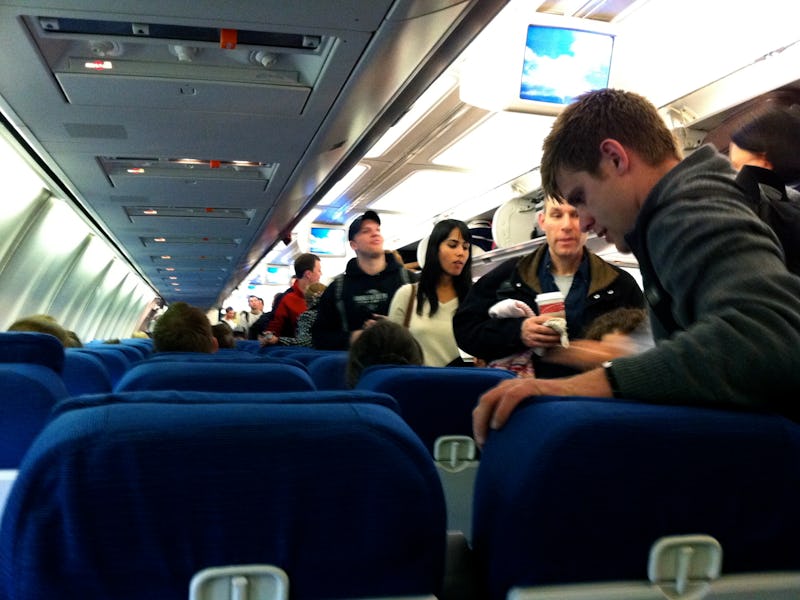The FAA Can No Longer Ignore 'Incredible Shrinking Airline Seat'

Size matters. Or at least it does with airline seats.
That’s why the U.S. Court of Appeals for the District of Columbia finally ordered the airline industry last week to “adequately address” increasingly tight quarters on commercial airplanes — and the safety problems they allegedly pose.
“This is the Case of the Incredible Shrinking Airline Seat,” Judge Patricia Millet wrote in the court opinion. “As many have no doubt noticed, aircraft seats and the spacing between them have been getting smaller and smaller, while American passengers have been growing in size.”
In recent years, airlines have looked at many ways to cut costs and increase profits, often at the expense of passenger satisfaction. While this new ruling has the potential to make airplanes more hospitable for flyers who need a little extra leg or elbow room, it comes in response to a very specific concern.
Back in 2015, the consumer advocacy group Flyers Rights filed a petition with the Federal Aviation Administration, arguing that reduced seat size could make it harder for customers to evacuate a plane in an emergency. The advocacy group cited two alarming statistics: While the gap between rows decreased by 4 inches and the average gap between seats by one and a half inches since the turn of the century, the average American gained more than 20 pounds. Flyers Rights also noted concerns of discomfort and deep vein thrombosis, a potentially deadly blood clot that can be triggered by immobility and tight quarters.
The FAA, which is responsible for regulating all things flight in the United States, rebuffed Flyers Rights the first time around. It said there was no cause for concern and cited “off-point studies and undisclosed tests using unknown parameters” in its support, according to Millet. Now, as a result of the ruling, the FAA is required to review the safety concerns once again.
It’s possible the FAA may come to the same conclusions the second time around, reports The New York Times. The ruling is vague, after all, requiring the FAA “adequately address” Flyers Rights’s concerns — not overhaul the whole industry.
The ruling could be seen as a small victory for evidence-based research, as the FAA is required to return to study on this issue and disclose that data to the public.
Ultimately, the issue of size is an economic one, not a structural one, as planes are engineered with multiple layouts. The world’s biggest plane, the Airbus A380plus, for example, will allow either for a maximum capacity of 850-some passengers in an all-coach layout, or for about 500 passengers in four classes to have rather spacious accommodations. While the manufacturer offers a range of options, the airlines that buy these planes tend to agree: Packing passengers in like sardines typically leads to a bigger profit.
If, on second glance, the FAA again finds that seat size is a matter of comfort, not safety, the winds of change may still be blowing. In 2016, Congress voted against measures that would have mandated a seat size minimum, but the bipartisan bill has since been resurrected. Though there’s no date for a vote on the measure, it’s a reminder that Congress has the ability to regulate the airline industry — a responsibility that may be increasingly important as the Trump administration considers the privatization of some of the FAA’s most central duties.